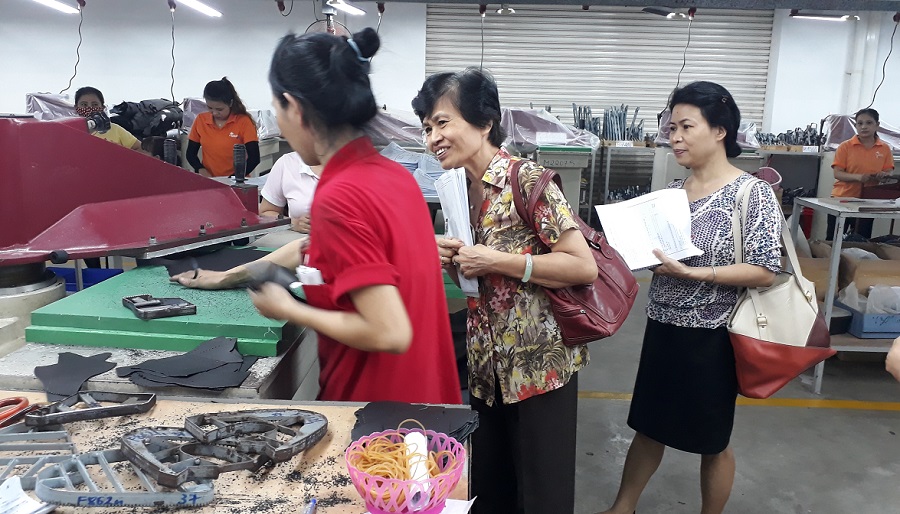Join the Leading Global Eye Health Alliance.
Membership-
Choose an alternate language here

In August 2017, The Fred Hollows Foundation conducted a baseline survey for the “Improving Vision to Empower Female Factory Workers” project.
The survey assessed factory workers’ knowledge, attitude and practices relating to eye care, the impact of working conditions on eye health, and eye disease prevalence among workers in the project sites of Rieker and Foster factories in Viet Nam.
In total, 849 workers (97% female) were interviewed and 40 workplace samples were assessed. Ethics approval for the survey was provided by the Human Research Ethics Committee of Ha Noi University of Public Health.
According to the factories’ periodical health examinations in 2016, 18% of workers in Rieker and 13% of workers in Foster were suffering from eye diseases, with refractive error being the most prevalent condition (95% in Rieker and 78% in Foster).
Recall interviews with workers over the past three years found that the average monthly output of workers with eye diseases was lower than those without eye diseases. The average number of days off and the production defect rate of workers with eye diseases were also found to be higher than those without eye diseases.
The workers’ average score on eye care knowledge was only 3.4/10 points. Workers lacked knowledge on eye prevention and protection (2/10 points) but generally had better knowledge on dealing with eye injuries at the workplace.
The evaluation found that 99% of workers acknowledged that eyesight was important for their work. They also considered periodical eye examinations important.
Only 18.3% of workers access periodical eye examinations and 40% of workers actively seek eye care information.
The eye diseases of concern, as reported by workers, included myopia (71.3%), followed by pinkeye/conjunctivitis (65.5%), cataract (64.5%) and hyperopia (62.1%). Other diseases such as eyestrain, blurred vision, astigmatism, trachoma, eye injury and glaucoma were also reported.
The preferred channel of communication for workers was the internet (39.3%). Other channels included communication through “doctors in hospitals” (37.9%); “television” (27.4%); “factory medical staff” (26.1%) and “leaflets” (17%).
Most (91.5%) workers reported using the services at their factory medical rooms. Of those who used the services, 77.5% were satisfied with service of factory medical staff. However, only 21% believed that eye diseases could be treated by the factory medical staff, and only 36.4% trusted their abilities.
After work shifts, 53.9% of workers reported experiencing eyestrain; 38% said that their eyes were itchy; and 31.6% reported having symptoms of double vision and/or blurred vision. The annual health check results conducted over the past three years show that the number of workers found to have eye disease or visual dysfunction symptoms has increased.
Workplace environmental factors such as dust, chemical exposure, lighting, microclimate and noise were reported to affect workers’ eye health. Due to the nature of production, workers focus on tiny details over long periods without changing their posture or position, which resulted in vision reduction and eye problems.
Overall, the survey found eye health was affected by poor knowledge, limited eye care practices among factory workers and environmental factors.
Following this baseline survey, a number of recommendations were included in the factory action plans for implementation.
In the third year of the project, a similar endline survey will be conducted to assess the effectiveness of the action plan implementation. This will be assessed by tracking changes in Knowledge Attitudes and Practices (KAP) and the proportion of eye diseases among workers, as well as the overall impact on factory productivity.
Phan Thi Trang
Project manager
The Fred Hollows Foundation Vietnam
[email protected]